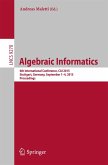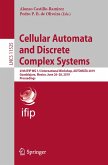Cellular automata were introduced in the first half of the last century by John von Neumann who used them as theoretical models for self-reproducing machines. The authors present a self-contained exposition of the theory of cellular automata on groups and explore its deep connections with recent developments in geometric group theory, symbolic dynamics, and other branches of mathematics and theoretical computer science. The topics treated include in particular the Garden of Eden theorem for amenable groups, and the Gromov-Weiss surjunctivity theorem as well as the solution of the Kaplansky conjecture on the stable finiteness of group rings for sofic groups. The volume is entirely self-contained, with 10 appendices and more than 300 exercises, and appeals to a large audience including specialists as well as newcomers in the field. It provides a comprehensive account of recent progress in the theory of cellular automata based on the interplay between amenability, geometric and combinatorial group theory, symbolic dynamics and the algebraic theory of group rings which are treated here for the first time in book form.
Dieser Download kann aus rechtlichen Gründen nur mit Rechnungsadresse in A, B, BG, CY, CZ, D, DK, EW, E, FIN, F, GR, HR, H, IRL, I, LT, L, LR, M, NL, PL, P, R, S, SLO, SK ausgeliefert werden.
From the reviews: "An excellent introduction to the subject of cellular automata on groups, complete with copious exercises. ... I like this book very much. The authors have set out to write a self-contained account, and I think they have succeeded. ... This is done using conventional notation and without idiosyncrasy, which to mind is important for any reader wanting to supplement their reading using other sources. All this is done whilst presenting some very recent material - a real achievement." (Charles Eaton, The Mathematical Gazette, Vol. 97 (539), July, 2013) "The book explores deep connections between two seemingly unrelated mathematical notions, both of which were introduced by J. von Neumann in the first half of the 20th century ... . The book is well written and develops very carefully the state of the art of the material sketched above ... . It is essentially self-contained ... and each chapter contains informative historical notes and a long list of instructive exercises." (K. Auinger, Monatshefte für Mathematik, Vol. 164 (3), November, 2011) "This book should be considered as self-contained, in the sense that all the concepts used are developed at length, together with a large choice of exercises. ... should make an important contribution to a field in rapid development, and which is at the intersection of algebra, analysis and computer science. It is carefully written, and is especially recommended to graduate students and researchers, who will find out in what way so many apparently distant concepts can fit together to make this fascinating theory." (Antonio Machì, Bulletin of the London Mathematical Society, July, 2011) "This wonderful book is about important links between four areas of mathematics: geometric group theory, theory of cellular automata, dynamical systems and amenability. ... the notions are clearly defined and illustrated by several examples and figures, and the proofs of all results are very carefully detailed and presented in an elegant form. For all these reasons I strongly recommend this brilliant book to both experts and students from all the areas of mathematics mentioned in this review, as well as many others." (Rostislav I. Grigorchuk, Mathematical Reviews, Issue 2011 j) "The book discusses these and related topics from the theory of cellular automata on groups and explores its deep connections with recent developments in geometric group theory, symbolic dynamics and theoretical computer science. ... The book has 8 chapters, 10 appendices and more than 300 exercises. It is oriented towards a broad audience, and shall be useful for experts as a detailed comprehensive account of the recent progress in the field." (Boris S. Kruglikov, Zentralblatt MATH, Vol. 1218, 2011)









